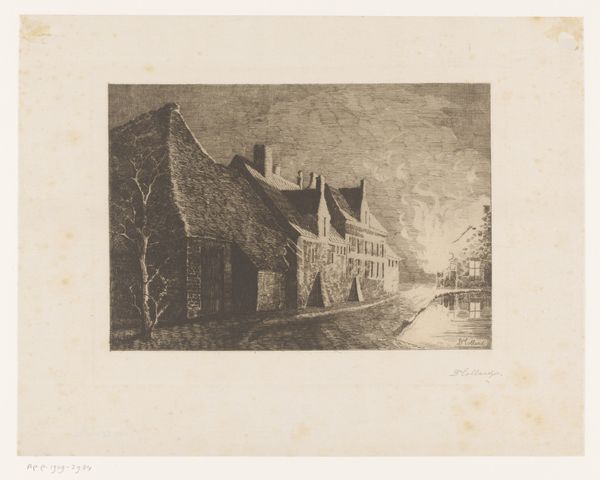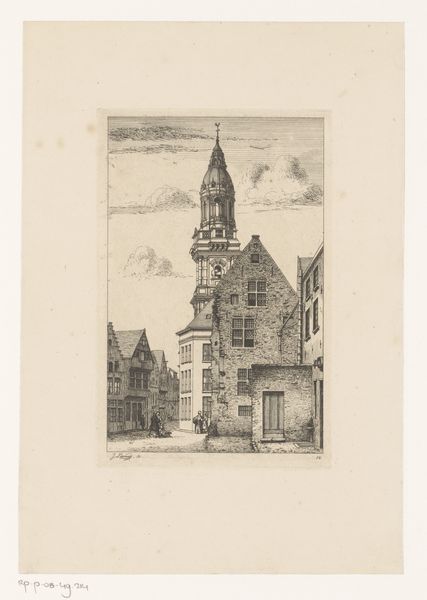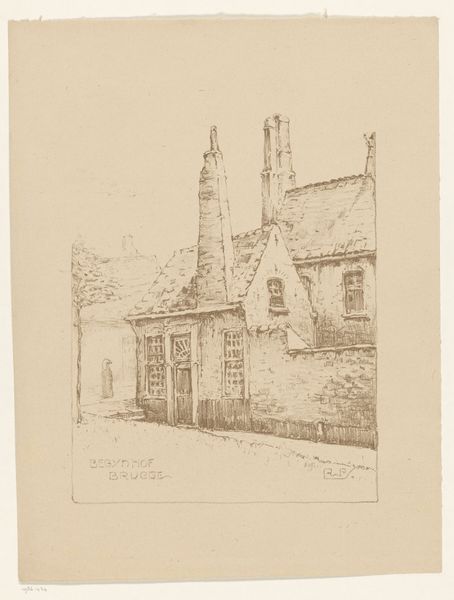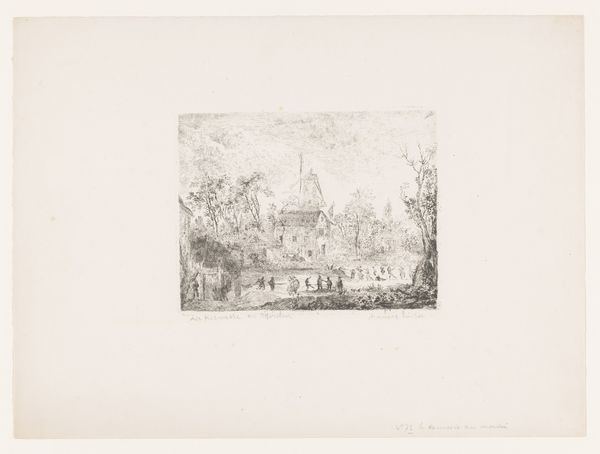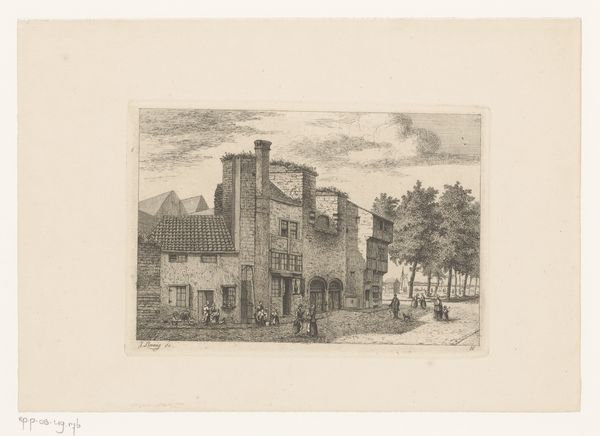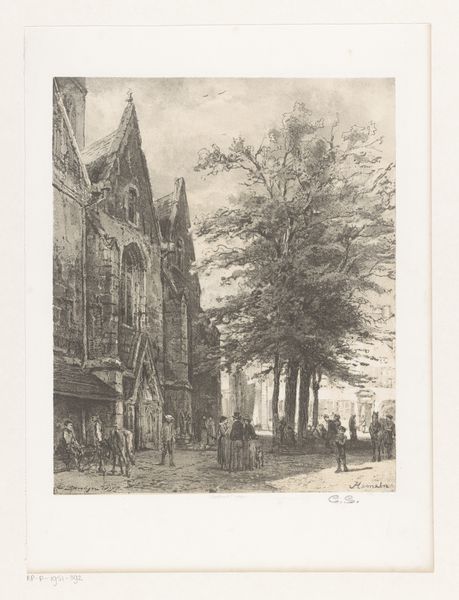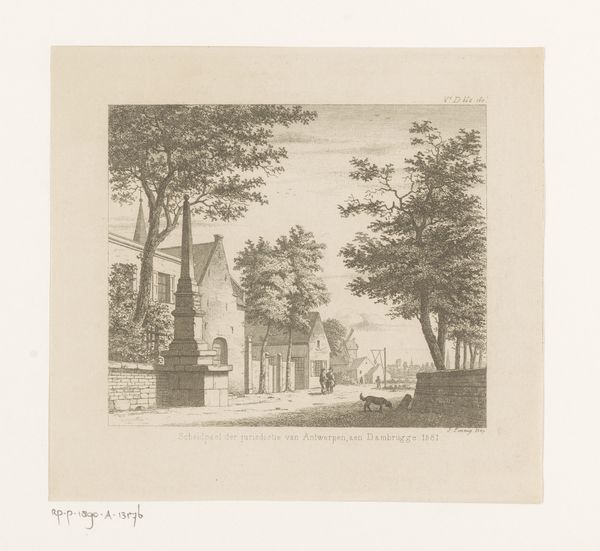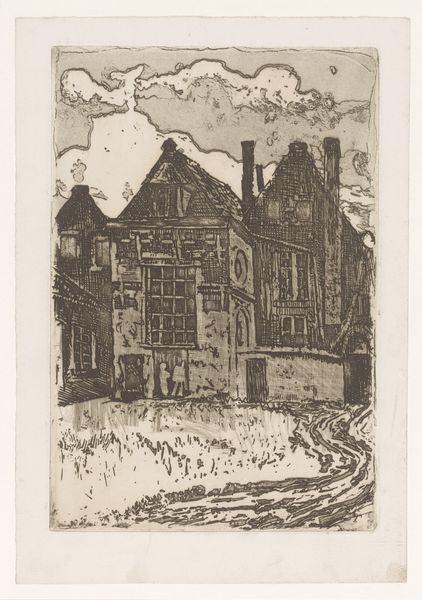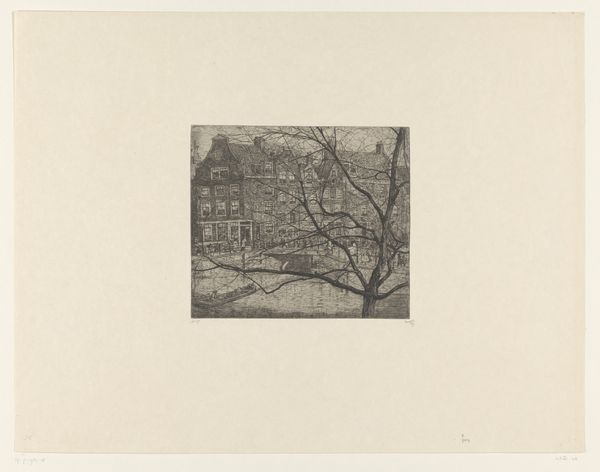
print, etching
# print
#
etching
#
landscape
#
cityscape
#
modernism
Dimensions: height 168 mm, width 158 mm
Copyright: Rijks Museum: Open Domain
Walter Zeising created this print of the Bakenesserkerk in Haarlem using etching, a printmaking technique that allows for detailed and textured images. The etching process begins with a metal plate, usually copper or zinc, coated with a waxy ground. The artist then scratches an image into the ground with a needle, exposing the metal. When the plate is dipped in acid, the acid bites into the exposed lines, creating recessed marks. The longer the plate remains in the acid, the deeper the lines. The plate is then inked, and the surface wiped clean, leaving ink only in the etched lines. Finally, the plate is pressed onto paper, transferring the image. The resulting print has a distinctive, slightly raised texture, a testament to the labor-intensive process. Zeising's choice of etching, rather than painting, suggests an interest in the democratization of art, making images accessible to a wider audience through the reproducible medium of print.
Comments
No comments
Be the first to comment and join the conversation on the ultimate creative platform.
